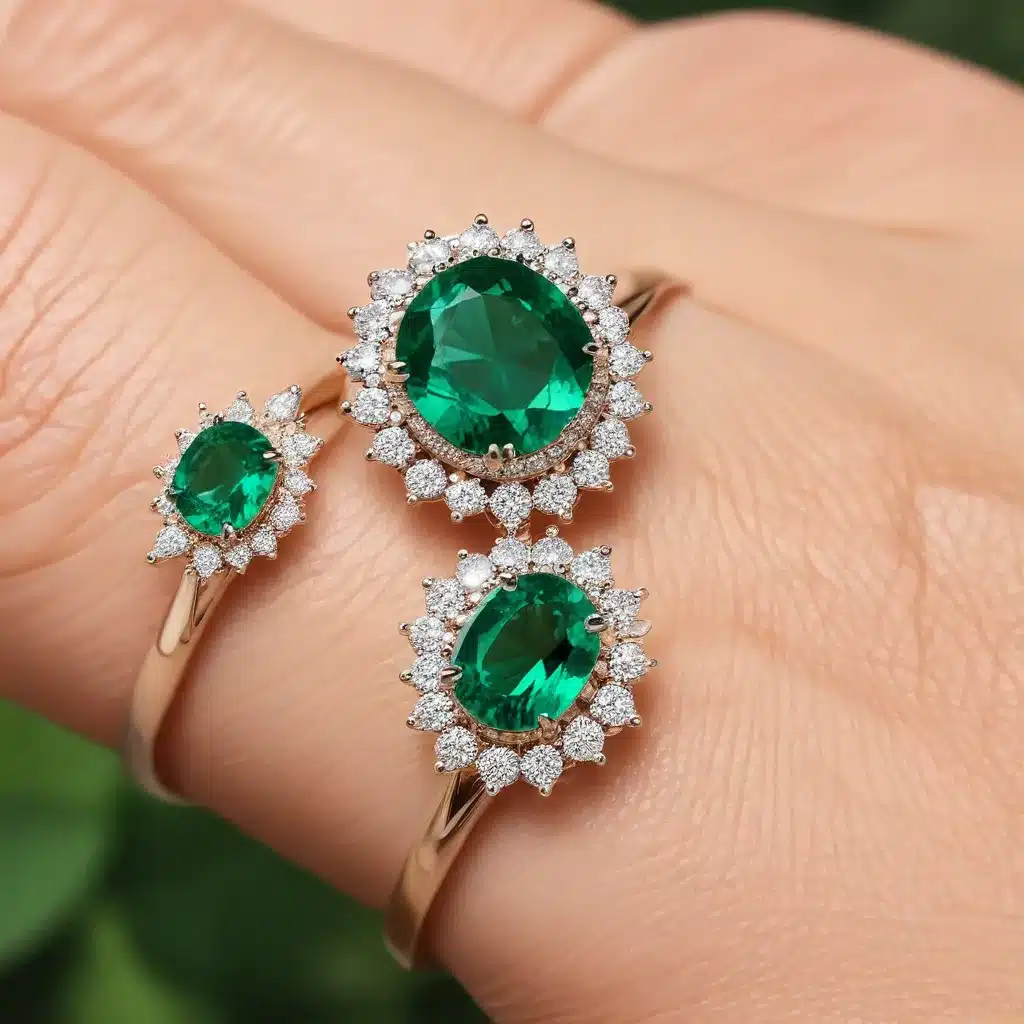
Emeralds are among the most captivating and coveted gemstones, renowned for their vibrant green hues and rich history. Mined from the earth’s depths, these natural wonders have long been cherished for their rarity and allure. But what if we could recreate the essence of emeralds in a laboratory setting? Enter the world of synthetic emeralds – man-made gemstones that rival the beauty of their natural counterparts.
The Formation of Emeralds
To understand the process of synthetic emerald creation, it’s helpful to first explore the origins of natural emeralds. These mesmerizing gems are formed deep within the Earth’s crust, where the mineral beryl crystallizes under intense heat and pressure. Trace elements like chromium and vanadium are the secret behind emeralds’ distinctive green hues, with the intensity of the color directly correlated to the concentration of these impurities.
The crystalline structure of natural emeralds is marked by its unique hexagonal arrangement, which contributes to the gem’s optical properties and durability. This intricate formation process is what gives each emerald its own unique character, with naturally occurring inclusions and flaws adding to the stone’s individual charm.
Synthetic Emerald Production
While natural emeralds are exceedingly rare, scientists have developed various techniques to recreate these vibrant green gems in a laboratory setting. The most common methods include flux growth, hydrothermal synthesis, and the Verneuil process.
Flux growth involves dissolving the necessary mineral components in a molten flux, which is then slowly cooled to encourage the formation of emerald crystals. This method allows for greater control over color and clarity, resulting in highly consistent synthetic stones.
Hydrothermal synthesis, on the other hand, replicates the natural conditions found deep within the Earth’s crust. By subjecting the raw materials to elevated temperature and pressure in a sealed vessel, this process produces emeralds with a more natural appearance and internal characteristics.
Finally, the Verneuil process utilizes a flame-fusion technique to grow emerald crystals vertically from a powder mixture. This method is known for its efficiency and the production of large, high-quality synthetic emeralds.
Physical Properties of Synthetic Emeralds
While synthetic emeralds may share many of the physical properties of their natural counterparts, there are some key differences that can be detected by trained gemologists. Synthetic emeralds often exhibit a more uniform, vivid green color with fewer inclusions and flaws than natural stones. They may also have slightly higher refractive indices and dispersion values, which can affect their optical performance and brilliance.
One of the most notable characteristics of synthetic emeralds is their ability to be produced in a wider range of hues, from the classic deep green to more unusual bluish or yellowish-green tones. This color versatility allows for greater creative expression in jewelry design and other applications.
The Art of Replicating Emerald Beauty
Creating a synthetic emerald that truly captures the essence of the natural gem is an art form in itself. Jewelers and gemologists must carefully consider the optical properties that define emerald’s allure, such as pleochroism (the phenomenon of displaying different colors when viewed from different angles) and dichroism (the ability to show two distinct colors).
The traditional emerald cut, with its rectangular shape and stepped facets, is a classic choice for highlighting the gem’s natural beauty. However, modern cutting techniques, such as the use of laser-precise faceting, can enhance the brilliance and fire of synthetic emeralds even further.
Durability and Care of Synthetic Emeralds
While synthetic emeralds share a similar chemical composition to their natural counterparts, their physical properties can differ slightly. Synthetic emeralds often have a higher Mohs hardness rating, making them more resistant to scratches and chips. However, they may be more susceptible to thermal shock and should be cared for with the same diligence as natural emeralds.
Proper cleaning and maintenance are essential for preserving the beauty of synthetic emerald jewelry. Gentle, soap-based cleaners and ultrasonic techniques are recommended, while harsh chemicals and abrasives should be avoided. With the right care, synthetic emeralds can retain their lustrous appearance for years to come.
Distinguishing Natural and Synthetic Emeralds
Identifying the origin of an emerald, whether natural or synthetic, is a task best left to trained gemologists. They employ a variety of techniques, from visual inspection and microscopic analysis to advanced spectroscopic methods, to determine the provenance of a gemstone.
Certification from reputable gemmological institutes, such as the Gemological Institute of America (GIA) or the International Gemmological Institute (IGI), can provide assurance of a synthetic emerald’s authenticity and quality. By following industry-standard grading and reporting guidelines, buyers can make informed decisions and enjoy the beauty of these man-made wonders with confidence.
The Versatility of Synthetic Emeralds
The versatility of synthetic emeralds extends far beyond the realm of fine jewelry. These lab-created gems have found applications in a wide range of industries, from high-end optical components and electronic devices to industrial abrasives and laser technology.
In the jewelry world, synthetic emeralds are prized for their ability to be crafted into stunning, custom-designed pieces. From engagement rings and bridal jewelry to pendants, earrings, and bracelets, these gems offer a more affordable alternative to their natural counterparts without sacrificing visual appeal.
Whether you’re a gemstone enthusiast, a jewelry designer, or simply someone in pursuit of emerald’s captivating allure, the world of synthetic emeralds holds a wealth of possibilities. By understanding the science behind these man-made marvels, you can appreciate the art of replicating nature’s most prized treasure.
For more information on synthetic emeralds and other gemstone options, be sure to explore the offerings at Shelby Gem Factory. Our team of experts is dedicated to helping you discover the perfect gemstone for your next project or personal adornment.

